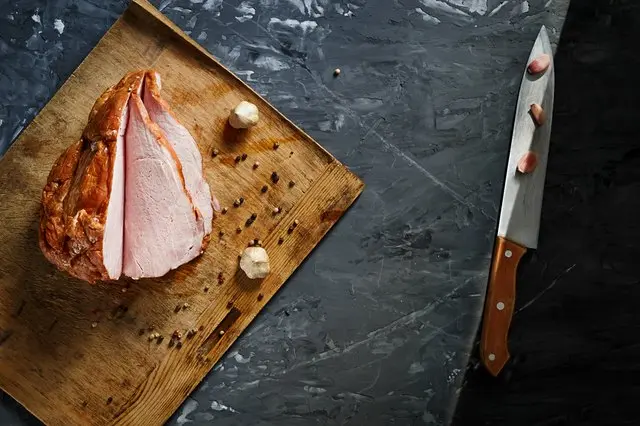When it comes to cured meats, hams are considered legendary. Whether they are wet-cured or dry, smoked or unsmoked, the rich flavor of a good ham always shines through. However, achieving a moist, delicate, melt-in-your-mouth texture can be a challenge for some cooks when preparing baked ham dinners.
Understanding the Basics of Ham
When a piece of pork is cured to make ham, it undergoes both chemical and physical changes. Osmosis draws salt and other curing ingredients into the muscle cells of the pork, causing the protein molecules to contract. This is why an uncooked ham has a firmer texture compared to raw pork roast.
Due to its density, ham requires long, slow cooking to become perfectly tender. It is also important to protect it from drying out during the cooking process.
Fall-Apart Ham in the Oven
Cooking any meat at high temperatures causes its protein molecules to shrink and toughen. While this is not an issue with a tender steak that only spends a few minutes on the grill, achieving extra tenderness in ham requires long, slow cooking.
This extended cooking time allows the fat to render out of the ham and the connective tissues to melt into natural gelatin. This process lubricates the muscle fibers and creates a moist, tender impression in the mouth. Slow cooking can be done in the oven or using a slow cooker.
Slow-Cooker Ham
Most full-sized hams are too large for standard slow cookers. However, smaller ham portions available at butcher shops and supermarkets can easily fit into a 6- or 7-quart slow cooker.
Before cooking the ham, trim any excess fat, leaving about 1/4 inch to prevent drying out. Glazing the ham is optional. Place the ham in a preheated slow cooker and add 1/4 cup of water, white wine, or cider. The liquid helps create steam in the slow cooker, preserving the moisture of the ham.
Slow Cook Ham in the Oven
Alternatively, you can achieve the same effect by slow cooking ham in the oven. For larger hams, try cooking at 250 degrees Fahrenheit, and for smaller ones, cook at 300 degrees Fahrenheit. To create steam, pour 1/2 cup of boiling water into the bottom of your roaster.
Another method is to use a roasting bag, similar to the ones used for cooking turkey. This also helps keep the ham moist while baking. Glaze the ham and cook it slowly until the internal temperature reaches 160 degrees Fahrenheit, which is the minimum safe temperature for consumption according to the USDA Food Safety and Inspection Service.
To achieve maximum tenderness and moisture, allow the ham to rest for up to 30 minutes before slicing and serving.
Slow cooked smoked ham requires time and patience to achieve the desired tenderness and flavor. By understanding the basics of ham and using the appropriate cooking methods, you can create a moist, melt-in-your-mouth ham that will impress your guests. Whether using a slow cooker or the oven, following these guidelines will ensure a delicious and memorable ham dinner.
If you want to know other articles similar to Slow cooked smoked ham: achieving tender & flavorful results you can visit the Cooking category.


Related Articles